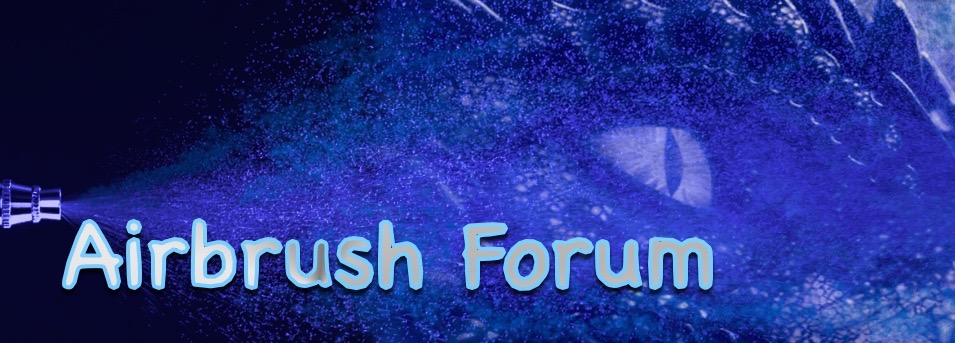Muzzz
Double Actioner
Hi all, well I took a leap off a cliff and attempted to paint my dog.
I don't think it's quite finished but I decided to stop for now because it's too cold to paint in my garage this week. I'm using a Badger patriot 105 with a .5mm needle on bristol paper with CI. I mixed most of the paint 1:1 with transparent base and then added 10-15% 4011.

So I have some questions. Is it just me or is animal fur really hard? I had difficulty with matching both the color and texture. She has a reddish-brown undercoat but then her fur gets very light and reflective at the ends, almost white-yellowish.
I think my biggest struggle is which order to lay down layers. After the initial landmarks, I did a darker undercoat of dagger strokes with umber and orange, then a light coat of dagger strokes with white and a touch of sepia and yellow, and then filled back in with umber for a few darker accents...and I think I need to add more of the last.
The fur looks too washed out and indistinct, I think because there are too many layers of dagger strokes that don't correspond to each other. I used a hefty amount of transparent base so maybe this also contributes to the indistinctness. Would it be easier to keep all the texture to one layer, and then just layer the colors on top of that?
Also as you can see my erasing still isn't working very well, I get the paint too thick and then try to erase too hard. I'm going to try gesso-ing the bristol first for my next piece.
Anyways, comments or suggestions welcome, thanks for looking.
Murray
I don't think it's quite finished but I decided to stop for now because it's too cold to paint in my garage this week. I'm using a Badger patriot 105 with a .5mm needle on bristol paper with CI. I mixed most of the paint 1:1 with transparent base and then added 10-15% 4011.

So I have some questions. Is it just me or is animal fur really hard? I had difficulty with matching both the color and texture. She has a reddish-brown undercoat but then her fur gets very light and reflective at the ends, almost white-yellowish.
I think my biggest struggle is which order to lay down layers. After the initial landmarks, I did a darker undercoat of dagger strokes with umber and orange, then a light coat of dagger strokes with white and a touch of sepia and yellow, and then filled back in with umber for a few darker accents...and I think I need to add more of the last.
The fur looks too washed out and indistinct, I think because there are too many layers of dagger strokes that don't correspond to each other. I used a hefty amount of transparent base so maybe this also contributes to the indistinctness. Would it be easier to keep all the texture to one layer, and then just layer the colors on top of that?
Also as you can see my erasing still isn't working very well, I get the paint too thick and then try to erase too hard. I'm going to try gesso-ing the bristol first for my next piece.
Anyways, comments or suggestions welcome, thanks for looking.
Murray
